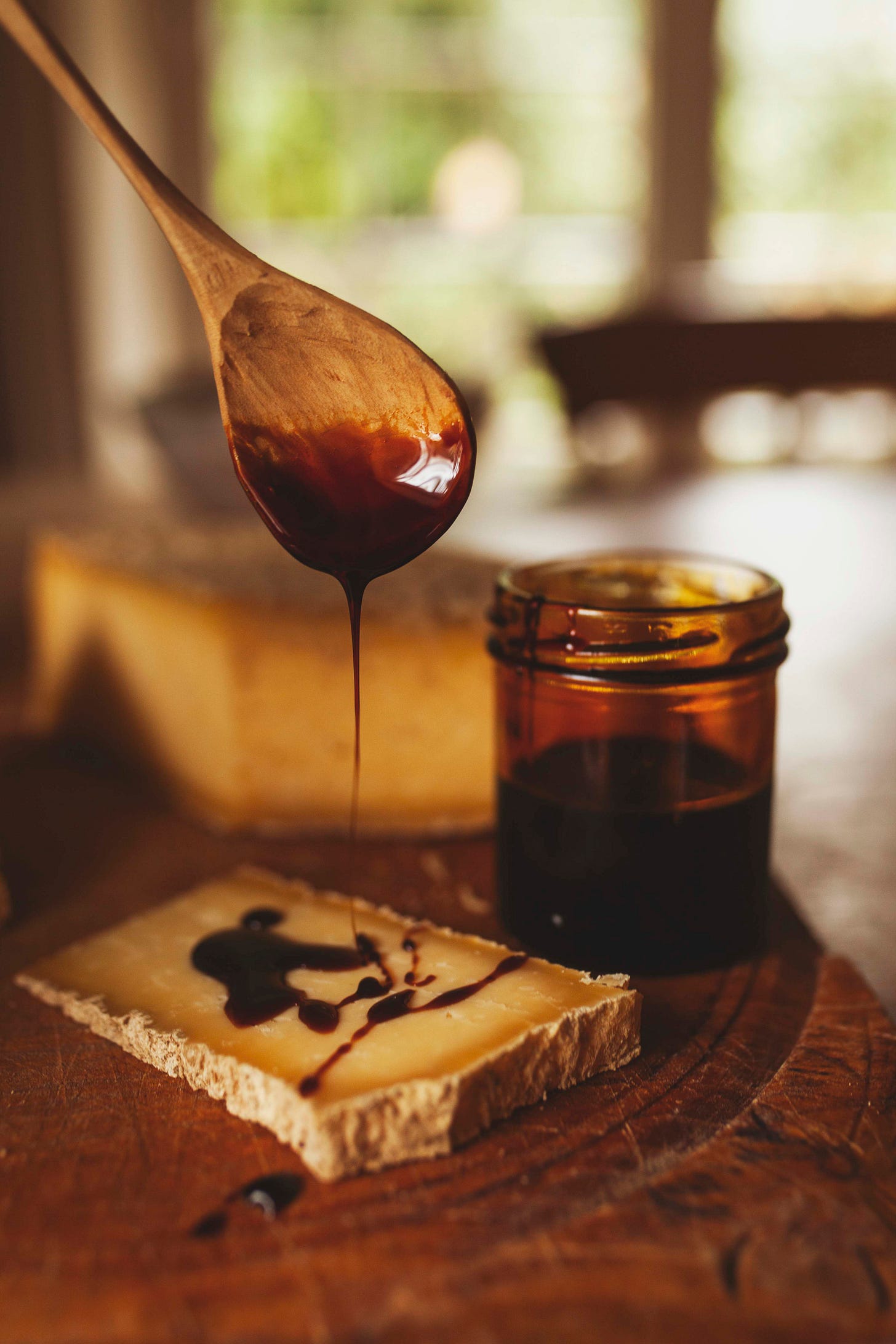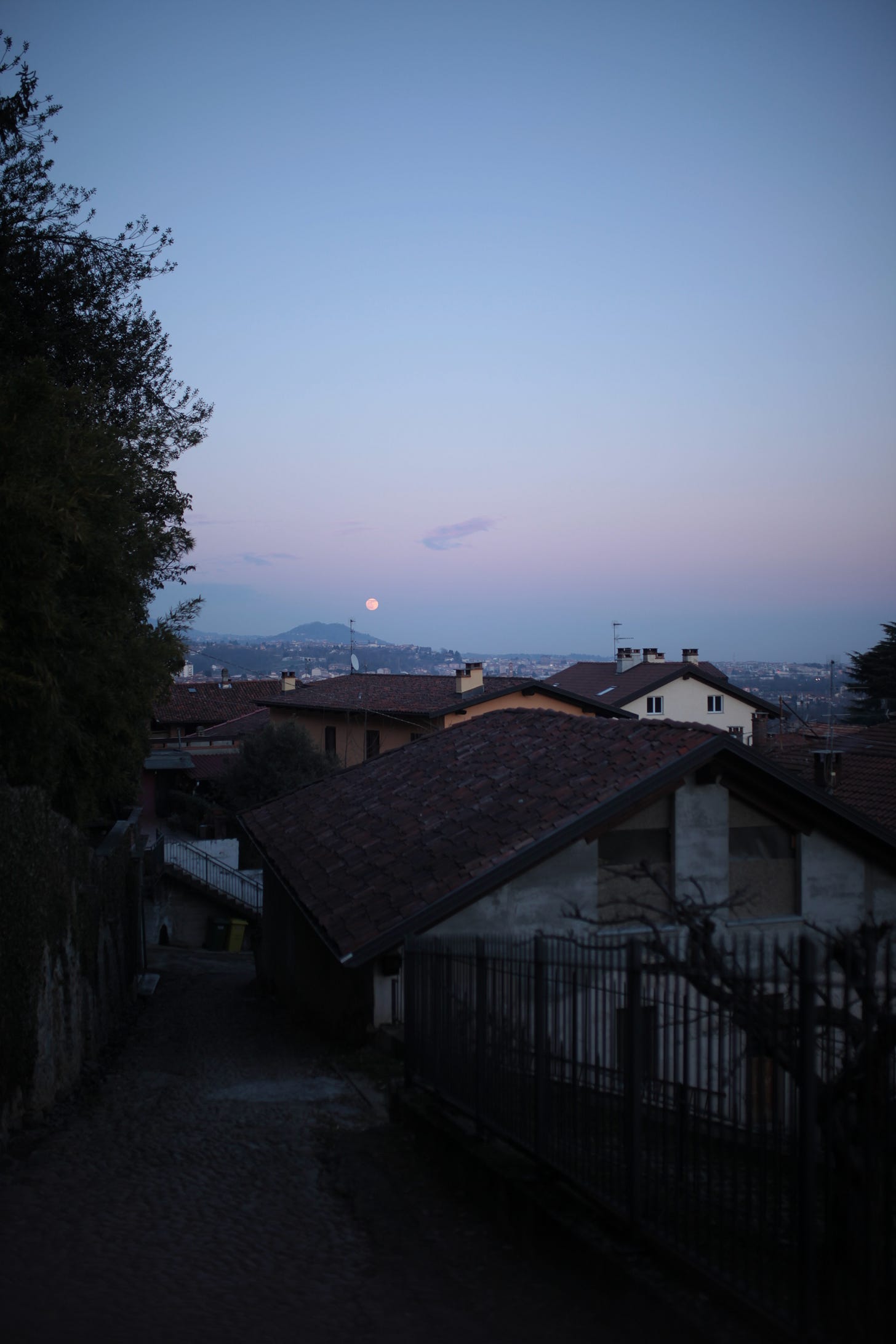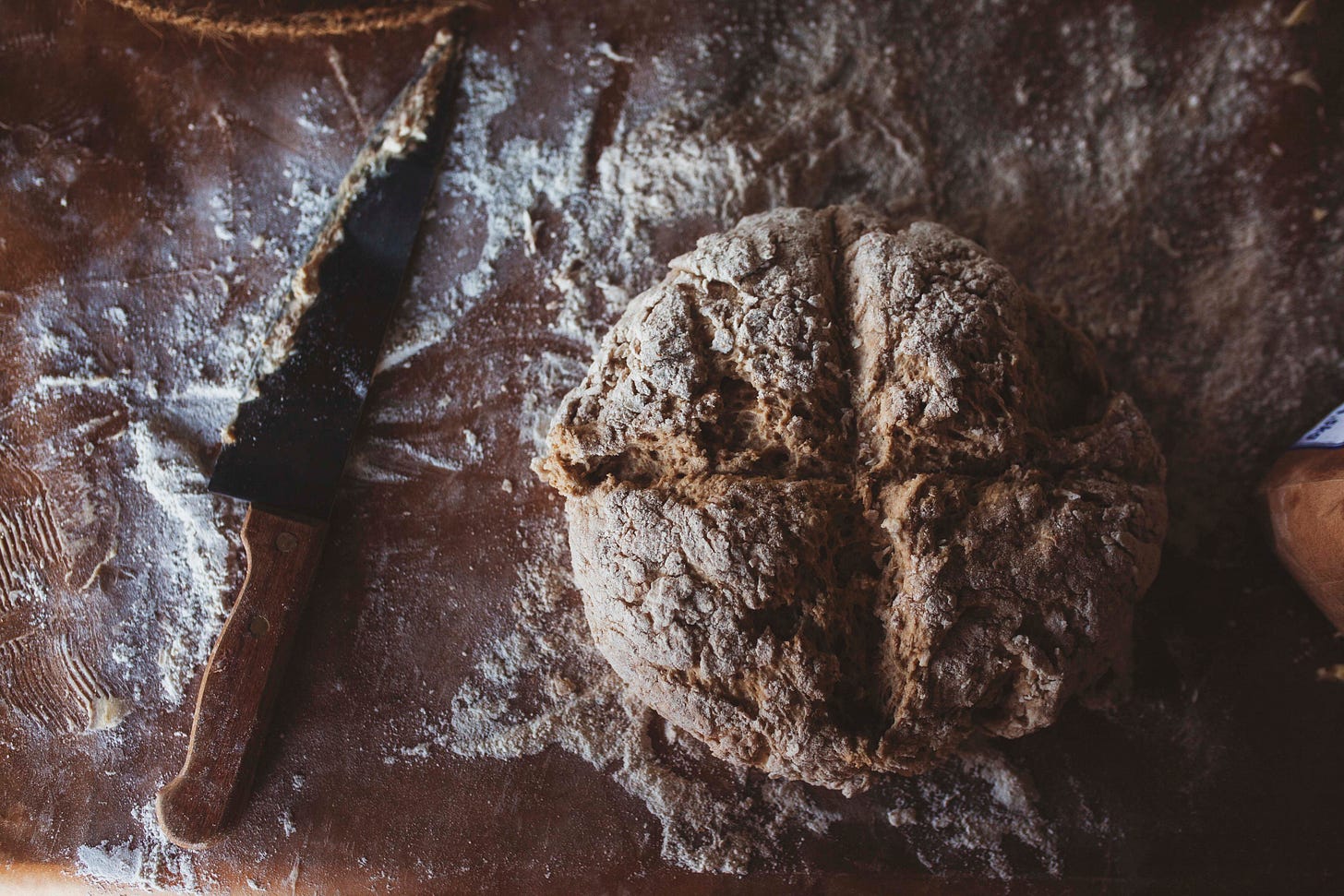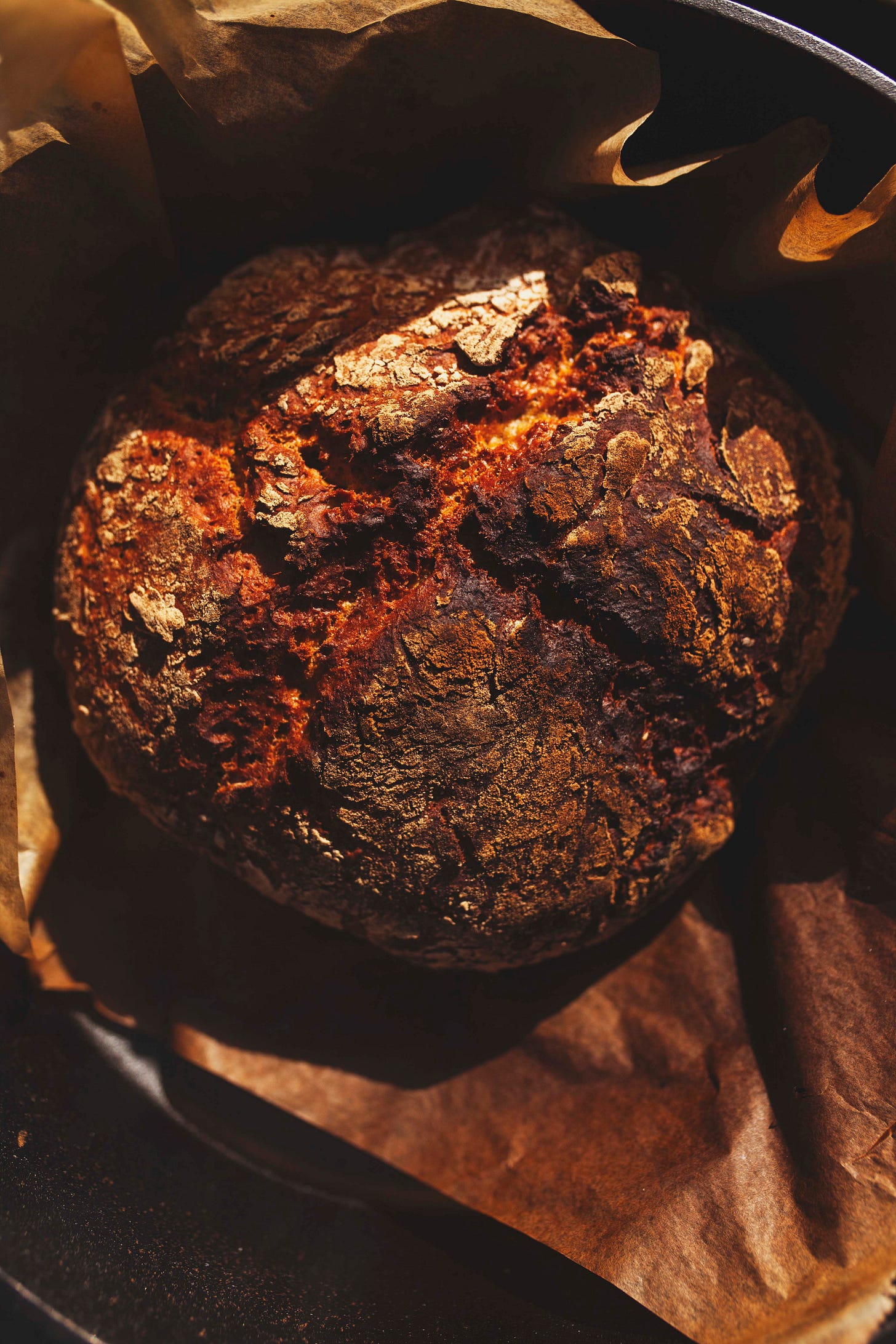MOSTARDA 'd POME // Valdengo // Piemonte // ITALY
A beautiful way to preserve apples by the mountain folk in the Italian pre-alps, to enjoy all year by transforming them into a stable condiment that would have been used on just about everything
Let’s ease into things with this great way to use all the apples we have around us at the moment! So glad to bring this lovely and simple one to the archive. It has become one of my staples, and it should be yours too. The basic principles and story are available for everyone. Paid subscribers can access a fuller method with pictures.
Mostarda ‘d Pome
I first came across mostarda some years ago in a small village shop by a petrol station on a very quiet street in the village of Candelo in Piedmont, northern Italy. What caught my eye was the texture of fresh ink on brown paper, and on further investigation it was indeed a tiny jar with a wonky handwritten label in the local dialect that read “Mostarda ‘D Pome €5”, and that was it. No bar code.
Mostarda ‘d Pome is an ancient food - an excellent example of the ingenuity and resourcefulness drawn form from cucina povera; the recipes developed by country folk through the ages as a means to survive in their given landscape, in this case the foothills of the Italian Alps for at least two and a half thousand years. The name for this surprising condiment comes from mosto or the “must” of apples (Pome), the rich and unfiltered liquid obtained by crushing a fruit which still has its pips, stem and skin, like grapes and wine or fresh cider before it is allowed to fully ferment.
Opening the small jar revealed a liquid that looked like molasses, with the smell of toffee apples and the motion of treacle. What it does to your mouth is wonderful- just like eating a sour, lactic cheese where you release gushings of saliva - still sweet and acutely tart, but with depth and a silky, syrupy texture. This is truly one to fit into your calendar, as production is simple and it lasts for as long as it takes you to finish eating it. It is a magnificent way to harness the apple harvest of September and October, rolling it through the year, bringing the auburn and russet tones of a past autumn to warm the cosy and dark winter table.
I get so excited with discoveries of recipes like mostarda ‘d pome. The idea that you can make something with seasonal/wild food, that can replace cupboard staples that we use on a daily basis, but usually import from other countries. In this case, we are looking at a way to preserve your own apples, often native to the area, that will be your new balsamic vinegar, which isn’t shipped in from Modena.
—
The traditional diet of the small mountain commune of Valdengo near Candelo mentions that the food consisted of polenta, pan robi (maize flour bread called “the blonde bread of the countryside”), wholemeal bread, milk, soups made of milk, rice, beans or chestnuts, rice stews with vegetables cooked in cured back fat from a pig, cabbage boiled in the same water used to cook salame stored in fat, and fresh tomato risotto.
Their main meals would consist of fried vegetables rolled in polenta flour, white meat from the chickens or rabbits that lived on the farm, charcuterie processed and fermented by the family, often preserved in rendered pig fat to prevent oxidation, and homemade cheeses, fresh or mature depending on the time of year, with mostarda.
Mostarda is made at home with the family. Through autumn, apples are harvested and eaten. Any bruised or second-rate apples are pressed and the juice cooked down in large copper pans, until it becomes a syrupy, dense, dark liquid which is sweet, a little bitter from burning the sugars and very tart, which is then bottled. This would become one of those specific flavours that coloured the season, as being made in autumn it would be used regularly throughout the winter when food was scarce, replacing vegetables, eaten with cheese, or sometimes replacing cheese entirely in the famously delicious dish, polenta mostarda, which is simply polenta with lashings of mostarda.
It was a favourite with children at snack time (merenda) with polenta or bread and butter, often drunk with mountain spring water as a thirst quenching cordial if there would be any left over the following summer. I highly recommend using mostarda this way- I have tried it with a naturally sparkling mineral water a little like vichy catalan, using ice from a frozen waterfall and a slosh of grappa to make a really excellent aperitivo.
It is a bombshell of versatility for any pantry that will last the year round. I use it to replace balsamic vinegar in many recipes, with one of my favourite salad dressings made of hot beef dripping, salt and mostarda. At the recent forbidden feast series at the Booley we served it over raw scallops, and even hot smoked haddock with raw butter, making a phenomenal meal made in its entirety of the local landscape.
I have been told how traditionally it would would have been a real treat poured over fresh snow as a granita, or drizzled ever hard cheese. I have even used it to kickstart the baking soda in traditional Irish soda bread and for curries that call for tamarind water, as well as for the secondary fermentation in my wild cider makes.
The flavour is sweet and tart, with a balanced bitterness from the lightly caramelised sugars that gives an unmistakable character of toffee apple and bonfires, no doubt from cooking over fire for two whole days. And how great to reach from your cupboard mostarda made with apples local to you. This is an absolute must (literally) and I highly recommend it feature in your autumn calendar, when the apples are plentiful. Here’s how to do it.
Keep reading with a 7-day free trial
Subscribe to Up There The Last to keep reading this post and get 7 days of free access to the full post archives.







